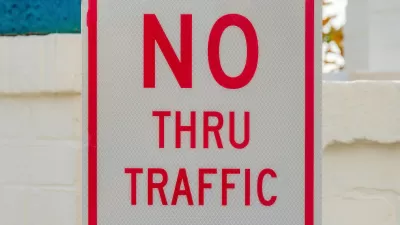Security is a major concern during large public events like the Olympics. The Chinese government is making preparations for a safe event, but could they go too far?
"Several events in China have raised concerns about public safety during the Games. Chinese officials, anxious to ensure the Olympics would be safe in the city of 17 million, have thrown down a smothering blanket of security."
"On Aug. 4, 2008, a vehicle rammed into a Chinese police station in western China, and attackers threw grenades, killing 32 people – the deadliest attack on security forces in recent times. Chinese counterterrorism experts claim that the country tracks a number of terrorist groups, from Muslim separatists, Al Qaeda, and Falun Gong to ethnic Chinese."
"'From a safety and security perspective, the Beijing Olympics are the third major Olympic event to occur outside the United States since 9/11. At the previous two events in Athens and Turin, a security and crisis response operations center was centrally located at the Games, clear event planning and crisis response roles and responsibilities for participating agencies were spelled out beforehand, and planning for Olympic-related security expenditures was accomplished early,' says security consultant Richard P. Grassie, CPP, President, Techmark Security Integration Inc., Rockland, MA."
"It's a fine line between balancing public safety and security to protect citizens from terrorism, and respecting civil liberties in a free society."
"China's installation of thousands of surveillance cameras on lampposts and in Beijing Internet cafés and bars may have another intent: to track dissidents who oppose the current one-party rule. The most extensive and sophisticated Western video monitoring will remain in place after the Olympics are over. Other video-monitoring systems are being installed in China's 600 largest cities."
Thanks to ArchNewsNow
FULL STORY: Security of Olympic Proportions: Conventional Wisdom on Safety at Public Venues

Planetizen Federal Action Tracker
A weekly monitor of how Trump’s orders and actions are impacting planners and planning in America.

Maui's Vacation Rental Debate Turns Ugly
Verbal attacks, misinformation campaigns and fistfights plague a high-stakes debate to convert thousands of vacation rentals into long-term housing.

San Francisco Suspends Traffic Calming Amidst Record Deaths
Citing “a challenging fiscal landscape,” the city will cease the program on the heels of 42 traffic deaths, including 24 pedestrians.

Defunct Pittsburgh Power Plant to Become Residential Tower
A decommissioned steam heat plant will be redeveloped into almost 100 affordable housing units.

Trump Prompts Restructuring of Transportation Research Board in “Unprecedented Overreach”
The TRB has eliminated more than half of its committees including those focused on climate, equity, and cities.

Amtrak Rolls Out New Orleans to Alabama “Mardi Gras” Train
The new service will operate morning and evening departures between Mobile and New Orleans.
Urban Design for Planners 1: Software Tools
This six-course series explores essential urban design concepts using open source software and equips planners with the tools they need to participate fully in the urban design process.
Planning for Universal Design
Learn the tools for implementing Universal Design in planning regulations.
Heyer Gruel & Associates PA
JM Goldson LLC
Custer County Colorado
City of Camden Redevelopment Agency
City of Astoria
Transportation Research & Education Center (TREC) at Portland State University
Jefferson Parish Government
Camden Redevelopment Agency
City of Claremont




























